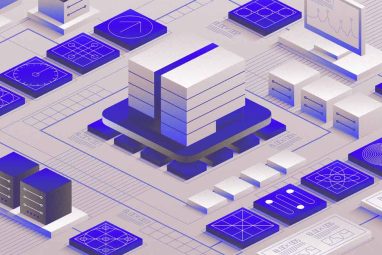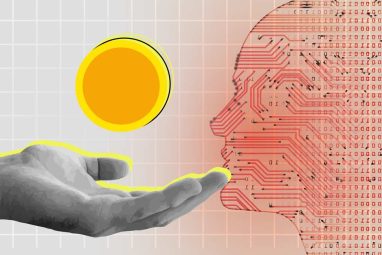When India Stops Talking About AI and Starts Building It
India’s artificial intelligence strategy is entering a decisive build phase, with IPOs, public infrastructure pilots, multilingual models, and regulatory guardrails taking shape under the IndiaAI Mission.
Topics
News
- RBI Stays Cautious on Crypto as Malhotra Flags 'Huge' Risks
- TCS, TPG Bet Big on India’s AI Compute Future
- OpenAI, Foxconn Team Up to Build UScAI Data-Center Hardware
- Musk Says Jobs May Become Optional and Money May Lose Relevance
- Google Unveils Nano Banana Pro With Sharper Text, Smarter Visuals
- Palo Alto Networks Buys Chronosphere in $3.35 Billion AI Bet

For years, India’s AI story lived in the realm of ideas, announcements, and bold ambitions. But now, signs of a broad-based buildout are emerging—in markets, in public services, in labs, and in policy rooms.
This week, Fractal Analytics, the country’s first AI unicorn, filed for a ₹4,900 crore ($560 million) share sale with market regulator Sebi, setting up a key test for homegrown AI in the public markets. The initial public offering (IPO) by the AI and analytics provider could value the firm at more than $3.5 billion.
However, the shift isn’t just visible in valuations and capital flows. It’s also showing up in quieter corners of public infrastructure. The Indian Railways, for instance, is preparing to expand an AI-powered warning system along elephant corridors after a successful pilot in Coimbatore helped prevent train–wildlife collisions.
These are two very different arenas, but both point to the same turn: from showcase to application.
At the heart of this momentum is the IndiaAI Mission, approved by the Union cabinet in March 2024 with a ₹10,300 crore (about $1.2 billion) outlay over five years.
Framed as the country’s flagship AI strategy, it combines long-term investment with short-term deployment goals.
The program is structured around seven pillars: compute capacity, indigenous model development, open datasets, application ecosystems, skilling, startup funding, and safe and trusted AI.
Unlike many top-down tech roadmaps, the IndiaAI approach has emphasized collaboration from the start.
The effort is being steered by MeitY and its digital arm NeGD, in partnership with Nasscom, which serves as the industry bridge for execution.
Together, they are working with state governments like Telangana and Tamil Nadu to localize adoption, while bringing in academic institutions to anchor research and model development.
On the industry side, global tech majors NVIDIA, Microsoft, IBM, and Meta are contributing compute power, foundation models, and cloud infrastructure. Indian firms such as Fractal and Tech Mahindra are building localized applications and sector-specific use-cases.
While research leadership is coming in from IITs in Madras, Jodhpur, and Ropar, a wave of startups is busy innovating across real-world domains. CoRover in conversational AI, Niramai in thermal imaging for breast cancer screening, Haptik in customer service automation, Yellow.ai in enterprise chatbots, TagHive in classroom technology, and Oncostem in oncology diagnostics are just a handful of names among the many such AI startups on the rise.
Compute infrastructure is being scaled via a national graphics processing unit (GPU) marketplace to provide researchers and startups with affordable access to high-performance systems.
MeitY’s AI Compute Portal has already gone live, with additional investments planned for 27 AI data labs across the country.
This expansion reflects India’s bid to match global compute capabilities while tailoring access to domestic needs.
What makes the Indian model distinct is its strong orientation toward language inclusion.
The government-backed BharatGen project is expected to support all 22 scheduled Indian languages by June next year.
AIKosha, a national repository of over 400 datasets, underpins this effort, and other initiatives such as Mission Bhashini and Anuvadini are being designed to bring AI capabilities—translation, voice recognition, and public messaging—into India’s multilingual fabric.
These tools are part of a broader effort to make AI accessible to the next 500 million users.
Speaking at industry lobby Ficci’s Bhashantara 2025, MeitY secretary S Krishnan said India was ready to share its AI models with the Global South. “If you can build for India’s linguistic complexity, you can build for almost anywhere,” he said.
The United Nations has reportedly taken note, exploring collaborations that could scale India’s inclusive AI approach to other regions.
Ajay Data, chair of Ficci’s multilingual internet and universal acceptance committee, added that domain names are now available in all official Indian languages—part of a broader effort to make the internet “inclusive by design.”
Beyond the language stack, India’s soft power strategy is becoming clearer: build inclusive tools at home, and offer them as shared infrastructure abroad.
The information and broadcasting ministry, too, is pushing for AI-led tools in the creative economy. Secretary Sanjay Jaju has said that India’s linguistic and cultural landscape must shape how AI is used in public communication and content creation.
Translation, voice-based search, and AI-generated local-language content are becoming part of a state-backed push to close access gaps, especially in underserved regions.
At the same time, officials are putting in place frameworks to deal with AI’s failure modes. A nationwide logbook to record AI meltdowns, particularly across telecom and digital infrastructure, is also in the works. The system will catalogue incidents, identify causes, and measure fallout to help avoid similar breakdowns in future deployments.
This effort sits alongside India’s Digital Personal Data Protection Act 2023 and new guidelines under the IT Rules addressing deepfakes and identity misuse.
Together, these steps represent an early attempt to move from principles to operational safeguards in real-world AI systems.
While the policy and infrastructure push continues, the startup landscape is recalibrating after a period of breakneck growth.
According to Tracxn data, India saw 87 AI startups founded in 2023, almost a threefold jump from the year before. But the pace has since slowed, with only four new AI startups launched by April 2025.
Funding volumes tell a similar story: from a 2022 high of $788 million, funding dropped sharply to $133 million in 2023 before a modest recovery in 2024.
Founders are adapting to the new reality.
“What’s exciting is the shift we’ve seen over the past few years,” said Ankush Sabharwal, founder of BharatGPT.ai and CoRover.ai. “With support from IndiaAI, Startup India, and DST programs, the ecosystem now feels more grounded and focused on long-term impact.”
Investors, too, are showing signs of favoring startups that address real-world constraints, including compute, regulation, and localization, over quick-turn demos.
Global capability centers (GCCs), meanwhile, are carrying much of the operational load for enterprise-grade AI development.
Bengaluru remains India’s GCC capital, housing over one-third of all centers.
Karnataka’s GCC Policy 2024–29 aims to add 500 new centers by 2029, create 350,000 jobs, and generate $50 billion in economic output.
Hyderabad is fast catching up with 355+ GCCs, and cities like Pune, Chennai, Gurugram, and Thiruvananthapuram are attracting new investment on the back of skilled talent, lower operating costs, and strong state support.
According to Zinnov, India’s GCC market could touch $99–105 billion by 2030, driven largely by automation, AI, and sector-specific digital transformation.
Much of the model-building and application testing in India today is taking place in these GCCs, which now function as AI delivery engines for global firms.
The shift in tone is visible across the system.
A few years ago, much of the AI conversation in India centered on how to catch up with the West. Today, the focus is on building for Indian conditions, across languages, sectors, and states, and then scaling outward.
The build is slow, but deliberate.
A unicorn files for a public listing. An alert system saves elephants. Language becomes a key plank of digital access. Regulators watch not just for misuse, but for failure.
It may not yet be a wave. But piece by piece, India is building the pipes.



